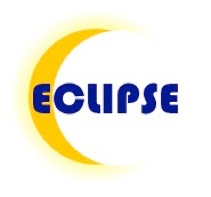LASAR is a collaborative project for the Faraday Institute for Science and Religion (based at St. Edmund’s College, Cambridge) involving researchers from the University of Reading’s Institute of Education (Dr Berry Billingsley; Helen Newdick) and the University of Cambridge’s Faculty of Education (Dr Keith S Taber; Fran Riga).
The premise behind LASAR was the conjecture that many school age children would have little idea of the range of views taken on the relationship between two of the major areas of human culture, science and religion. Moreover, it was suspected that a common perception might be that science and religion are somewhat exclusive ways of looking at the world.
The basis for such assumptions were (a) the findings reported from some previous research projects from various parts of the world; (b) awareness that the arguments typical of those who seek to find commonalities or accommodations between scientific ideas and religious belief tends to rely on high-level abstract thinking that will not be available to younger learners; and (c) a perception that where such issues are tackled in high-profile media the notion that the scientific worldview is an atheistic one seems common.
With some seed funding from the John Templeton Institute, we undertook a small-scale pilot survey of year 9 students (13-14 year olds) in a small number of English schools. We found that among our sample there were students who considered aspects of common religious belief (e.g. a creator God) to be contrary to the scientific worldview. We also found that proportions of students who, for example, believed in the power of prayer, but considered that science excluded such a possibility. It would seem from this initial work that many pupils have a limited view of science which ascribes a particular set of metaphysical values (about the possibility of God acting in the World for example) - that are claimed by vocal radical atheist scientists - to scientists in general. It also seemed than quite a high proportion of our sample held equally simplistic notions of religious understandings – for example considering that the scriptural accounts of the creation of the world needed to be read literally (although this is not a position that is not taken, for example, by the main Christian Churches in the UK).
These are important issues for at least two main reasons. For one thing, many students clearly have a restricted and unrepresentative understanding of how science and religion may be understood to relate, which is clearly of itself a concern. In more pragmatic terms, the finding that students from faith backgrounds (which most of our sample claimed) often thought that ‘good scientists’ signed up to particular views on matters such as a creator God, prayer, miracle etc. that were contrary to their own personal values and beliefs is clearly likely to be a factor when these students consider science options for further education and careers. There is the potential here both to reduce the possible pool of future scientists (which is already a major concern) and to fuel a viscous circle where science primarily attracts only those young people who reject those aspects of religious belief considered incompatible with scientific work.
The LASAR project is taking this work forward in two distinct ways.
Part of the project is concerned with collecting further research evidence to develop the understanding of this issue. We are looking to compare the perceptions of students at different secondary ages to consider any age-related shifts. We will also be looking to explore student thinking in more depth, to find out more about the source of information available to them, how they interpret and understand the ideas they meet, how they weigh different sources of information, and the extent to which such ideas influence both their own thinking about the issues themselves and their degrees of aspiration to study and work in science. This project strand will allow us better describe and understand the current situation.
Parallel with this, and based on what we have already found out, the project also has a resource development strand, which will support students and teachers by making available to learners opportunities to find out more about a wide range of views about how science and religion are understood to relate, and so to offer a more balanced view of the different approaches to the issue in contemporary thought.
Visit the LASAR Project homepage at https://sites.google.com/site/lasarproject/
Visit the teaching resources at http://www.faradayschools.com/
Visit Prof. Berry Billingsley's homepage at the University of Reading about science and religion.
Some writing about science and religion.
Return to ECLIPSE homepage
List of science topics

Dr Keith S Taber kst24@cam.ac.uk
University of Cambridge Faculty of Education
© Keith S Taber